Lecture
This lesson gives an idea of the kinetic models and methods of visual contact and possible interpretations in communication. Conducted situational games: "The impact of visual contact." Test exercises: "What the eye says," "Understanding the code of visual contact."
Khatlin M. Sign Language in Business Communication. M .: Publishing house Eksmo, 2003.-224 p.
Sight - eye to eye
Looking into the eyes is a familiar element of non-verbal communication. Many of us who are not very aware of other aspects of body language, however, know or realize that the nature of the gaze directed at a person implies a particular message.
Perhaps this is because the signals sent by the eyes, these “windows of the soul,” are the most important in interpersonal communication.
We cannot consciously control the signals of the pupils and respond to them like an unconsciously hook.
When we see something attractive or interesting, our pupils dilate, become larger, but when we react to stimuli that trigger feelings such as anger or hostility, our pupils shrink, become smaller (Figure 3.)
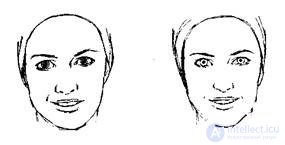
Figure 3
Even without realizing it, we perceive and send such signals. As our pupils dilate, if we look at someone or something pleasant to us, people tend to treat us kindly, seeing our pupils enlarged, and, on the contrary, show restraint, seeing your pupils reduced.
Exercise 1. "What look in your eyes tells you about a person"
Check what feelings you have messages sent by the eyes. Distribute the listed characteristics in the relevant sections with the subtitles "Pleasant Look" and "Unpleasant Look." You can add your ideas (table 6).
table 6.
Not trustworthy, truthful, attentive, confident, silent about something, experienced, insincere, knowledgeable, friendly, daring, absent-minded, arrogant, sincere, obsequious, restless, approving, interested, threatening, polite, etc. |
"Pleasant Look" "Unpleasant Look" |
A look in the eyes and communication patterns
The above exercise certainly confirmed that you associate an unpleasant gaze with negative characteristics. A look in the eyes is so important for the process of communication that when it is absent or does not correspond to the situation, we are embarrassed, and those who do not look us in the eye are not at all inclined to trust. There are certain models and rules of communication that are associated with the way the signals are used through the eyes in the process of communication. And if you violate these rules, for example, look at people too intently or try to look away, they will most likely find you a person unreliable, unpleasant and not even trustworthy.
The usual model of communication, according to the findings of Michael Argyle, is as follows: the time during which the interlocutors look at each other is from 30 to 60% of the duration of communication. Exceeding this time will cause anxiety, confusion or be regarded as a threat, because, as a rule, it is not associated with business communication, but with deeper personal relationships - so lovers constantly look into each other's eyes or their enemies wither each other while preparing for a fight . A shorter time may indicate insincerity of the people leading the conversation or lack of interest.
It’s customary for us to look at our interlocutor more when we listen than when we speak. When we speak, we look into a person’s eyes for about 40% of this time. We do not look at the interlocutor incessantly - sometimes we briefly look away, thinking over the next point of conversation or looking for the right word, and then again looking at the person. When we listen to him, we don't take our eyes off him any longer: approximately 70% of the communication time. If you look at the talking person even longer, he will consider your look too intent and intrusive, and a shorter time can be regarded as a signal of boredom and distraction.
To correctly determine the duration of visual contact requires experience and practice. It is absolutely necessary for you to look at the person with whom you are talking in order to establish communication with him and feedback. While you are speaking, you should evaluate how much you understand and react to what you have said. However, if your views are too brief and frequent, you will create an atmosphere of nervousness. Hold the gaze on the person for a few seconds, then look away and look at the person again, this time a little longer. When you listen, it is difficult to maintain eye contact while avoiding a focused look. Try to look at the other person’s forehead and do not forget to respond with a nod or shake of the head and facial expressions. Your eyes, in response to what has been said by the interlocutor, squint when you smile, or are rounded, when you want to express surprise as well as interest. Thus, you not only demonstrate your attention to the interlocutor, but you yourself feel more natural and produce the corresponding impression of naturalness.
Exercise 2. "Frequency of views"
Below is a description of the observation that must be made and filled in according to the appropriate form (Table 7).
table 7.
Make such an observation: note the number of views that two people engaged in a conversation direct at each other while they are speaking and listening. How much does the observed model correspond to the above? Could you assess the specifics of the conversation, based on the frequency of views and their character? |
How to encourage eye contact
Of course, you cannot force a person to look at you. What you can do is use a combination of verbal and non-verbal behavior that leads at least to the fact that the person changes the direction of his gaze.
Think about why a person avoids looking at you. He may be shy and embarrassed. The lack of visual contact may indicate coldness or unfriendliness, as well as the fact that the person is just bored. The reason may lie in the fact that they disagree with you or they do not understand you. You will clarify this for yourself if you ask a question that will force a person to look in your direction, and then you, if necessary, move over so that you can meet the person with his eyes.
Changing the position when you sit down or get up a little closer or a little further, also makes some kind of change in the nature of communication.
You can direct a person’s gaze — for example, pointing to a document on a table — and then hold a finger or pointer to your eyes so that your interlocutor follows their gaze by inertia and looks up at you (Figure 4, 5).
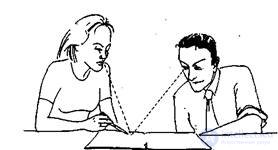
Figure 4
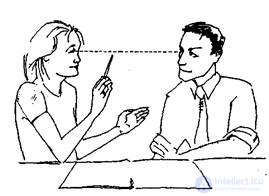
Figure 5 - Using the handle to control the interlocutor's view.
Some ways to use visual contact
Business look
When you conduct business negotiations, imagine that a peculiar triangle is drawn on the face of the interlocutor. By focusing your eyes inside this zone, you will give the impression of a serious person. Your partner will feel that you are responsible and reliable. If your gaze does not fall below the level of the interlocutor's eyes, you will be able to keep the conversation going under control (Figure 6).
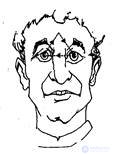
Figure 6
Informal look
When the interlocutor's gaze falls below the level of the partner's eyes, a friendly atmosphere arises. Experiments have shown that during informal communication on the face of the interlocutor can also be distinguished triangular zone. In this case, it is located between the gases and the interlocutor's mouth (Figure 7).
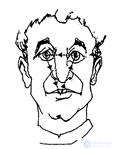
Figure 7
Intimate look
In this case, the gaze may slide over the face of the interlocutor, fall on the chin and other parts of the body. With close contact, this triangle can stretch to the chest, and if people are far apart, then drop to the level of the genitals. Men and women use this view to show their interest in each other. If a person is interested in you, he will return the same look to you (Figure 8).
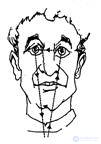
Figure 8
Examples to analyze the situation.
Scene 1. Sally is confused.
“I want to talk to you about the receptionist,” Lorna says to Sally. - It is necessary that there was order from morning to evening. At the beginning of the day, everything is fine, but it costs two or three visitors to visit us, as in the reception room - a mess. What do you think? - Lorna stares at Sally.
“Um ...” Sally looks at the front desk, then looks back at Lorna. Lorna still has her eyes on her. Sally begins to feel awkward, as if she herself had disordered the waiting room. - It seems to me that we can leave the desk in turn and fix it in the waiting room, which is not so. - Sally looks up at Lorna, who is looking at her without blinking. Sally looks down, confused.
Scene 2. Julie is secretive.
Darren promised to send parts to the client, but to his surprise, he discovered that they were not there. Parts suppliers usually never let them down.
“I think you said that you made an order for a new delivery,” he says to Julie.
Julie avoids looking into his eyes, but responds by casting quick glances around.
“Yes, I did,” she says. He stares at him for a short time and looks away again.
Darren feels that Julie is hiding something. Her body language indicates an embarrassment, and a reluctance to look directly in the eyes is a sign that Julie is not inclined to be frank. Darren is in no hurry to draw conclusions, but what he noted for himself will make him find out what happened, and only then he will contact the suppliers.
Scene 3. Naomi looks out of the corner of her eyes.
Rachel needs someone to be in charge of the new window dressing. Her first choice was Lance, but he reminded Rachel that at that time he would have a vacation. Rachel decided to ask Naomi - the girl was new, but showed ability. When Rachel turned to her, Naomi agreed, but turned away from Rachel so as not to meet her gaze.
Exercise 3. Interpretation of views
Analyze all the script options for this table 8.
table 8.
a) What conclusion can Rachel make based on the signals sent by Naomi with her eyes? Think of a few possible reasons. one |
2 |
3 |
b) How would the fact that Rachel would mark Naomi's non-verbal message for herself would help both in establishing productive communication? one |
2 |
3 |
Exercise 4. Impact of visual contact
Recall a few instances of business communication when you could turn to visual contact. Perhaps it will be a conversation with the boss, greeting a friend in the hallway or explaining the tasks to the employee. In each case, you deliberately look at them as closely as the situation allows, so as not to cause them discomfort. At the end of the day, describe each case and the emotions you have tested in a table (table 9). You can use some words from the list below to describe your reaction.
table 9
Embarrassed, awkward, self-reliant, inspired, interacting, efficient, confident, friendly Face situation my feelings one. |
2 |
3 |
Effective visual contact speaks of confidence and inspires confidence. He will allow you to establish a good business relationship and will build you a reputation for being open and sincere.
Comments
To leave a comment
Kinesika
Terms: Kinesika